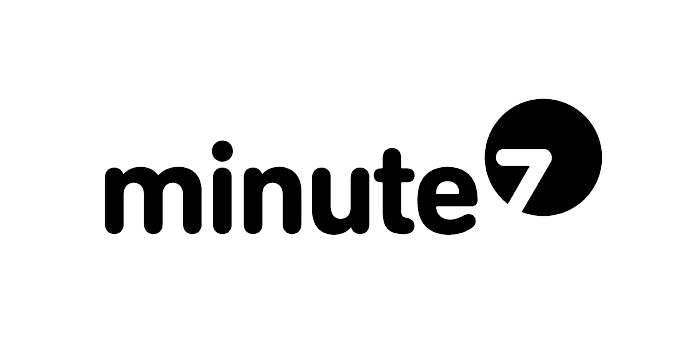Did you know that employees waste an average of 2.9 hours per workday on non-work activities? According to a recent study by Salary.com, this translates to approximately $759 billion in lost productivity annually across U.S. businesses alone. Meanwhile, companies that implement effective time tracking systems report up to 30% improvements in project completion rates and 25% reductions in operational costs.
In today’s competitive business landscape, understanding where time goes isn’t just about monitoring employees—it’s about optimizing your most valuable resource to drive sustainable growth and profitability.
The Hidden Costs of Poor Time Management
The problem extends far beyond simple productivity losses. Without proper time tracking mechanisms, employers face a cascade of operational challenges that can severely impact their bottom line. Research from the Harvard Business Review reveals that organizations lacking time visibility struggle with accurate project estimation, leading to budget overruns that average 27% above initial projections.
Consider the ripple effects: when project timelines extend unexpectedly, client relationships suffer, team morale declines, and opportunity costs mount. A mid-sized consulting firm recently discovered through implementation of comprehensive time tracking that what they assumed were 40-hour projects were actually requiring 65 hours on average—a revelation that completely transformed their pricing strategy and profitability.
The challenge becomes even more complex in today’s hybrid work environment. Remote and flexible work arrangements, while beneficial for employee satisfaction, have created new blind spots for employers trying to maintain visibility into work patterns and productivity trends.
Understanding the Modern Time Tracking Landscape
Effective time tracking has evolved far beyond simple punch clocks and manual timesheets. Today’s sophisticated systems provide granular insights into work patterns, project progression, and resource allocation that enable data-driven decision making.
The context matters significantly. Different industries require different approaches: creative agencies need project-based tracking to understand profitability per client, while manufacturing companies focus on operational efficiency and labor cost optimization. Service-based businesses often require detailed billable hour tracking for accurate client invoicing and margin analysis.
Modern time tracking solutions integrate seamlessly with existing workflows, capturing data automatically while providing real-time insights that help managers make immediate adjustments when projects veer off course. This shift from reactive to proactive management represents a fundamental change in how successful organizations operate.
Five Strategic Approaches to Effective Time Tracking Implementation
1. Automated Integration Strategy
Rather than adding another tool to your employees’ workflow, integrate time tracking directly into their existing systems. Smart integrations with project management platforms, communication tools, and calendar applications ensure accurate data capture without disrupting productivity. For example, automatically tracking time spent in specific applications or on designated projects eliminates the need for manual input while providing precise insights.
2. Goal-Oriented Tracking Framework
Implement time tracking that aligns with specific business objectives rather than generic monitoring. If your goal is improving client project profitability, focus on tracking billable versus non-billable hours with detailed project categorization. For operational efficiency improvements, track task completion times and identify bottlenecks in standard processes.
3. Transparent Communication Protocol
Establish clear guidelines about what data is collected, how it’s used, and what benefits employees can expect. Companies that frame time tracking as a tool for professional development and workload optimization see 40% higher adoption rates than those that position it as monitoring. Regular feedback sessions where time data informs resource allocation and workflow improvements build trust and engagement.
4. Granular Analysis and Reporting
Move beyond basic hour counts to analyze patterns and trends. Weekly reports showing time distribution across projects, departments, and activity types provide actionable insights for resource planning. Monthly trend analysis helps identify seasonal variations and capacity planning needs, while quarterly reviews inform strategic decisions about staffing and service offerings.
5. Continuous Optimization Methodology
Treat time tracking implementation as an iterative process. Start with core functionality, gather user feedback, and gradually add features that address specific organizational needs. Regular system reviews ensure the tracking approach evolves with changing business requirements and team structures.
Measurable Benefits That Drive ROI
Organizations implementing comprehensive time tracking systems typically see immediate and long-term benefits that far exceed implementation costs. Project delivery accuracy improves dramatically—companies report 45% reduction in deadline extensions and 35% improvement in budget adherence within the first quarter of implementation.
Client billing accuracy increases substantially, with service-based businesses recovering an average of 15% more billable hours that were previously lost to inadequate tracking. This improvement alone often covers the entire cost of time tracking implementation within the first year.
Employee satisfaction often increases as well, contrary to common concerns about monitoring. When time data is used constructively to identify training needs, redistribute workloads, and recognize high performers, teams respond positively. A recent survey by the Project Management Institute found that 73% of employees in organizations with effective time tracking report higher job satisfaction due to clearer expectations and better work-life balance.
Resource planning becomes significantly more accurate with historical time data. Organizations can predict project timelines with greater precision, allocate staff more effectively, and identify when additional hiring or training is needed before capacity issues impact service delivery.
Strategic Implementation Roadmap
Begin implementation with a pilot program in one department or project team. This approach allows you to refine processes, address concerns, and demonstrate value before organization-wide rollout. Choose a team that’s already motivated to improve efficiency—early wins build momentum for broader adoption.
Establish baseline metrics before implementation to measure improvement accurately. Key performance indicators might include project completion rates, budget adherence, client satisfaction scores, and employee utilization rates. These benchmarks provide concrete evidence of time tracking ROI.
Training plays a crucial role in successful implementation. Invest in comprehensive onboarding that covers not just how to use the system, but why time tracking benefits both the organization and individual employees. Ongoing support ensures adoption rates remain high and data quality stays consistent.
Regular review cycles keep the system relevant and valuable. Monthly team meetings to discuss time data insights, quarterly system optimization sessions, and annual strategic reviews ensure your time tracking approach continues supporting business objectives as they evolve.
Building a Data-Driven Culture
The ultimate goal extends beyond simply tracking time—it’s about creating a culture where data informs decisions and continuous improvement becomes standard practice. When teams understand how their time contributes to organizational success and see tangible benefits from optimization efforts, time tracking transforms from administrative burden to competitive advantage.
This cultural shift requires leadership commitment and consistent communication about the value time insights provide. Share success stories, celebrate improvements, and demonstrate how time data supports employee development and career advancement opportunities.
External Links
Ready to transform your workforce productivity with strategic time tracking implementation?




